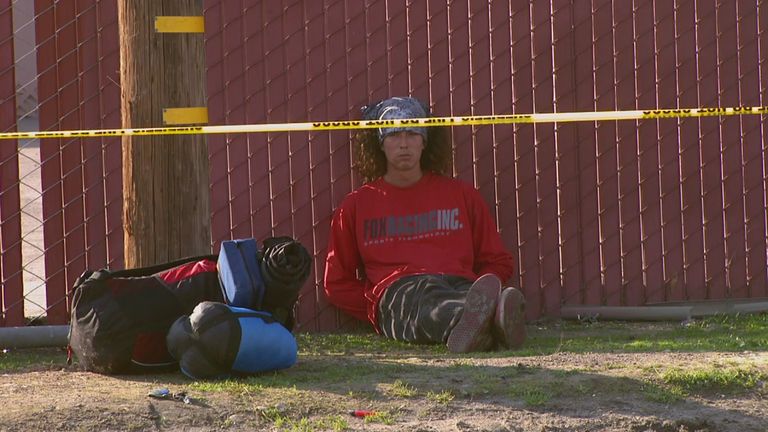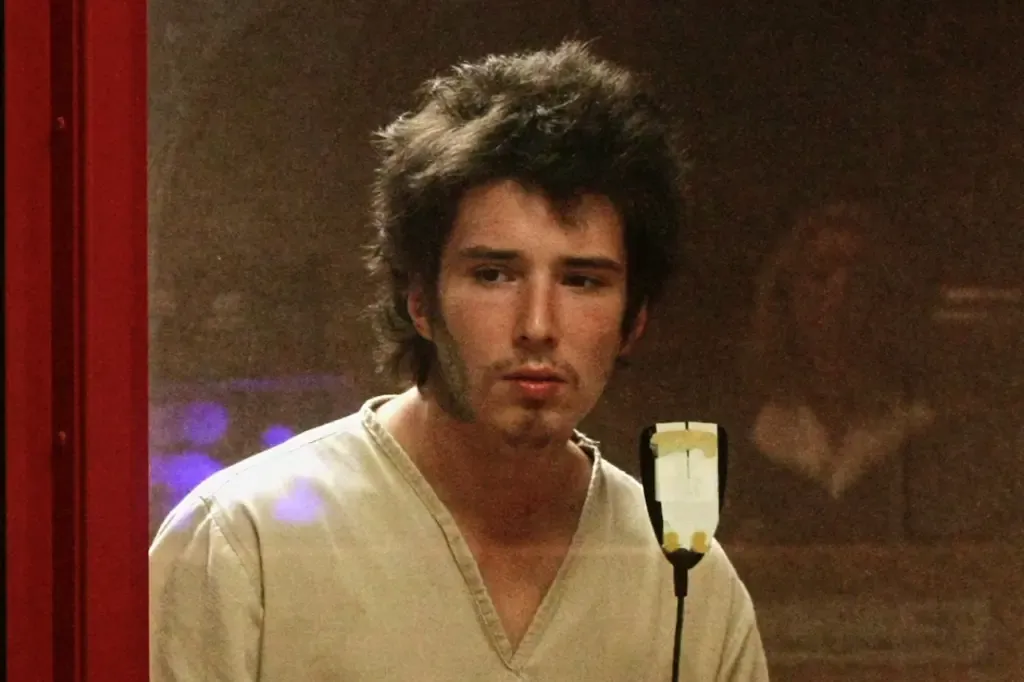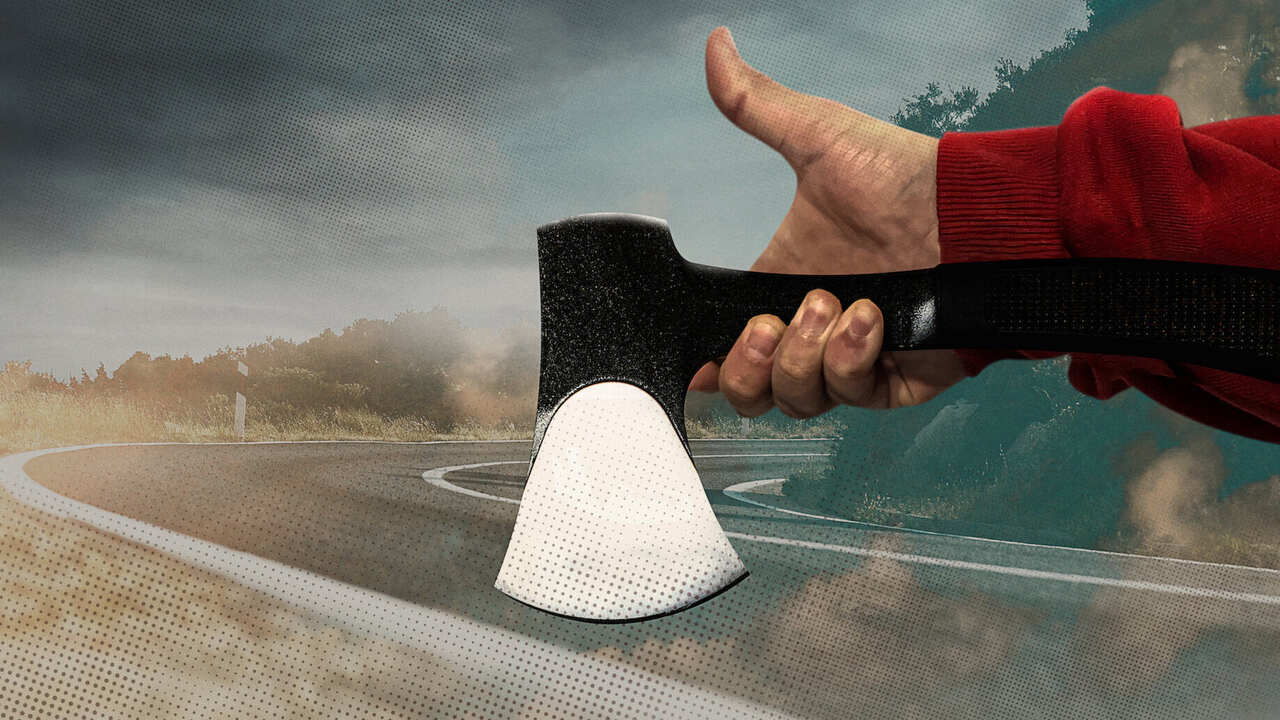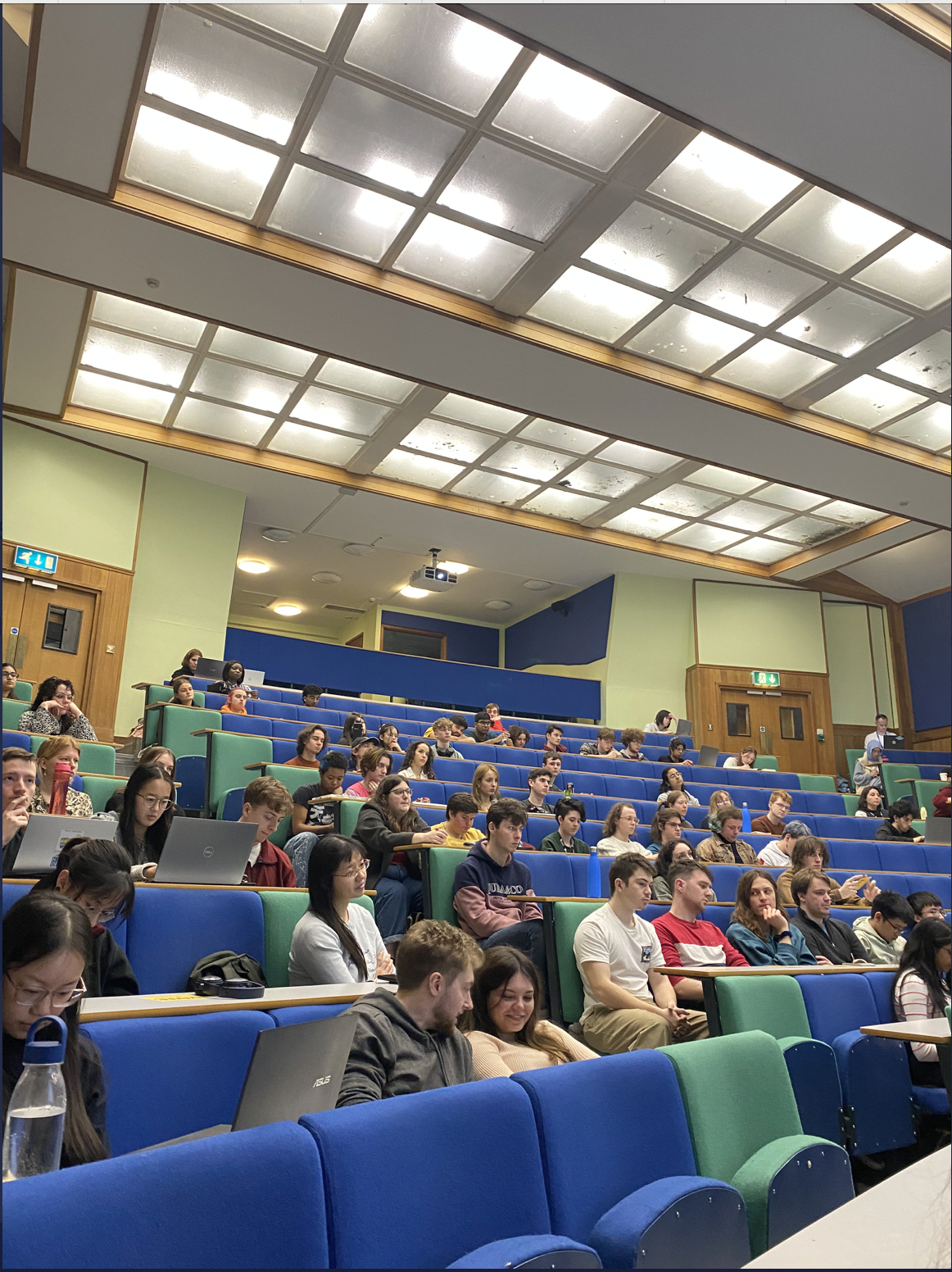By Kitty Fitzgerald, Third Year, Classics
‘If you’re going to tell a story, you need a villain, you need an unlikely hero, you need an amazing scenario, and you need someone in distress… and this had all of that.’ This is how cameraman Terry Woods describes the actions of the so-called ‘hatchet-wielding hitchhiker’ as something on par with epic or tragedy.
By the end of Netflix’s newest documentary, I, too, would say that the story is not far removed from such narratives, as director Colette Camden powerfully retells the dark history of Kai Lawrence. Camden takes The Hatchet Wielding Hitchhiker (2023) as an opportunity to remind us of the risks of glorifying the wrong people.

The documentary begins with Jessob Reisbeck, the news reporter who covered the initial story in which Kai, a free-spirited homeless man, became an unlikely hero in preventing a racially motivated assault. Overnight, he became a sensation due to his infamous description of the ‘smash… smash … smash’ of his hatchet against the attacker’s head. Despite this Patrick Bateman-Esque description, an eruption of memes, remixes and clips surged in the wake of the interview. Given how light-hearted the hero came across, little attention was paid to the violent capabilities of this hatchet-wielding hippy.
But how could the media miss that Kai had spoken about peace and almost killing someone in the same breath?

Still, it did not take long for Hollywood to hotly pursue him for contracts and interviews, even landing him on Jimmy Kimmel Live (2003-). However, with hindsight, the interview is disturbing, with laughter roaring from the audience as Kai proudly speaks about the incident and violence that ensued. Kimmel even rounds off the interview by jokingly thanking Kai for not killing him with the hatchet. How badly this joke would age.
Having heard from reporters and various Hollywood agents, we are unexpectedly plummeted into Kai’s childhood through his cousin, Jeremy, and his mother, Shirley. Kai had spoken online about abuse he had endured as a child, consolidated to an extent by his cousin but, unsurprisingly, outright denied by his mother. Both family members speculate that Kai had psychological disorders, however no attempt at a diagnosis was ever made.

It is here that the documentary shifts and a feeling of dread ensues. Within only 3 months, Kai spiralled from a global hero to a cold-hearted murderer.
On 13th May 2013, a New Jersey attorney named Joseph Galfy was found brutally beaten to death in his own home. An odd train ticket, paired with CCTV footage from a local station, confirmed that Kai had been with Galfy around the time of his death. Very little pointed to any motivation other than Kai’s claim of self-defence, but his police interview in which he asks what the penalty is for the crime in New Jersey was damning evidence. Kai was found guilty of first-degree murder and is now serving 57 years in prison.

Overall, I highly recommend this documentary for the cautionary tale it recounts. Not only does Camden successfully warn of the dangers of having ‘15 minutes of fame’, but she also reminds us of the due diligence that should be applied by the public and media regarding whom it is given to. It is most likely that Kai had undiagnosed disorders, but his dangerous tendencies were in plain sight and potentially preventable from the start.
As Joseph Galfy’s neighbour, Sandy Panman, poignantly remarks: ‘if you’re going to glorify someone, you better know who you’re glorifying.’
Featured image: Netflix, courtesy of Netflix
Did you find The Hatchet Wielding Hitchhiker a refreshing take on the true crime documentary?









